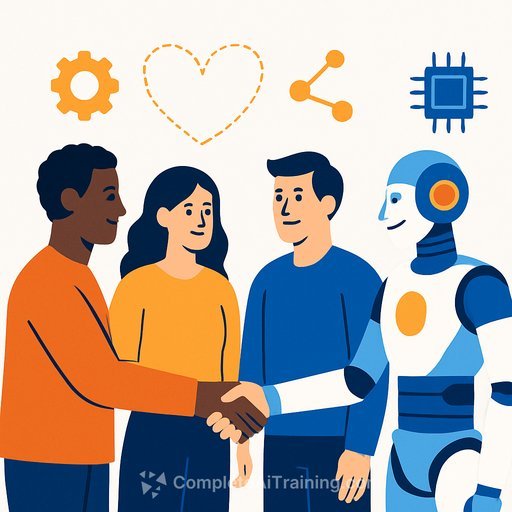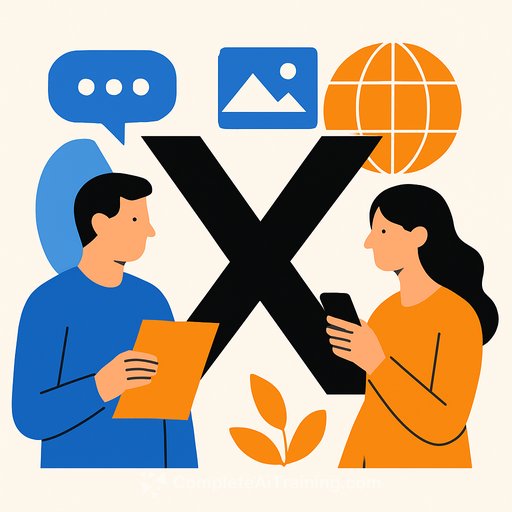AI in HR by 2026: Practical, Human-First, and Finally Useful
New hires can now be greeted by an AI assistant that guides training, introduces teammates, and checks in on progress. That's not a demo. It's being rolled out across companies today and it's accelerating through 2026.
The takeaway for HR: AI isn't here to replace the human touch. It's here to remove admin drag so you can spend more time on people, culture, and outcomes. Done right, it blends speed with empathy.
Streamlining Operations with AI
AI is already automating HR's heavy lift: benefits, FAQs, ticket routing, and policy lookups. IBM's Ask HR shows how a single assistant can handle common questions at scale, freeing teams for work that actually moves the needle. See IBM's approach.
- Connects siloed systems (there are roughly 5,700 HR/payroll tools out there) to reduce manual reconciliation
- Automates workflows for onboarding/offboarding, compliance checks, and audits
- Triages high-priority employee requests for faster, more consistent response times
Efficiency matters, but the experience matters more. The next wave of tools will combine quick answers with warm, context-aware guidance.
Personalized Onboarding That Actually Sticks
The first 90 days determine retention and ramp time. AI can adapt onboarding by role, skill level, and preferred learning style, then schedule check-ins and introductions that fit the person-not a template.
- Auto-built learning plans based on the job and existing skills
- Curated intros to key collaborators, mentors, and communities
- Pulse checks that flag blockers before week two turns into month two
The result: faster productivity, better belonging, and fewer preventable exits.
Digital Coaching and Real-Time Support
Coaching used to be reserved for executives. Now, confidential AI tools inside Slack or Teams make guidance available to everyone. Employees can ask for feedback, rehearse tough conversations, or get help planning growth steps-without waiting for the next 1:1.
- Private Q&A for policies, benefits, and career moves
- Micro-feedback and nudges based on goals and engagement trends
- Manager assist for performance notes, recognition prompts, and meeting prep
This builds a culture where learning is continuous and support is always on.
Leaner Teams, Stronger HR
Startups and small teams are scaling HR functions before hiring senior headcount. With AI handling recruiting support, compliance, and employee requests, leaders reclaim time for strategy.
- Automated state registrations, document collection, and payroll checks
- Structured requisitions, screening help, and interview coordination
- Proactive reminders for legal updates and audits
This doesn't replace HR. It makes great HR accessible to teams that used to live in spreadsheets and late-night catch-up.
Keep Humans in the Loop
The best outcomes pair AI speed with human judgment. Set clear guidelines so AI supports decisions, not makes them outright.
- Human review for sensitive actions (hiring, performance, terminations)
- Policy guardrails for fairness, transparency, and explainability
- Audit trails and bias monitoring to protect candidates and employees
Compliance isn't optional here. If your tools touch hiring or performance data, know the rules. The EEOC's AI guidance is a good starting point: EEOC on AI.
What This Looks Like by 2026
- Onboarding that adapts in real time and cuts ramp time by weeks
- Self-serve answers for 60-80% of routine questions
- Managers augmented with coaching prompts and recognition cues
- Compliance that runs quietly in the background with clear logs
- HR spending less time chasing data and more time driving culture
90-Day Action Plan for HR Teams
- Week 1-2: Pick two use cases with clear ROI (FAQ chatbot and onboarding workflows). Define success metrics (time-to-productivity, ticket resolution time, CSAT).
- Week 3-4: Clean your data. Standardize job titles, locations, and policy docs. Bad data will sink good tools.
- Week 5-6: Pilot with one department. Keep a human approval step for sensitive actions.
- Week 7-8: Train managers on prompts and review practices. Publish "what AI can/can't do" for employees.
- Week 9-12: Expand to two more teams. Add bias checks, access controls, and audit reports.
Governance Essentials You Shouldn't Skip
- Bias and fairness checks on hiring and performance recommendations
- Data retention, access control, and vendor risk reviews
- Clear employee communications and opt-out paths where appropriate
- Regular accuracy audits and a feedback loop for corrections
Metrics That Prove It's Working
- Time-to-productivity for new hires
- Ticket deflection rate and response time for employee questions
- Manager and employee satisfaction with coaching tools
- Compliance findings, audit completion time, and error rates
- Voluntary turnover in first 6-12 months
Final Word
AI will handle repetitive work. HR will double down on trust, connection, and culture. That's the point.
If you want structured upskilling for your team, explore job-specific programs here: Complete AI Training - Courses by Job.
Your membership also unlocks:






